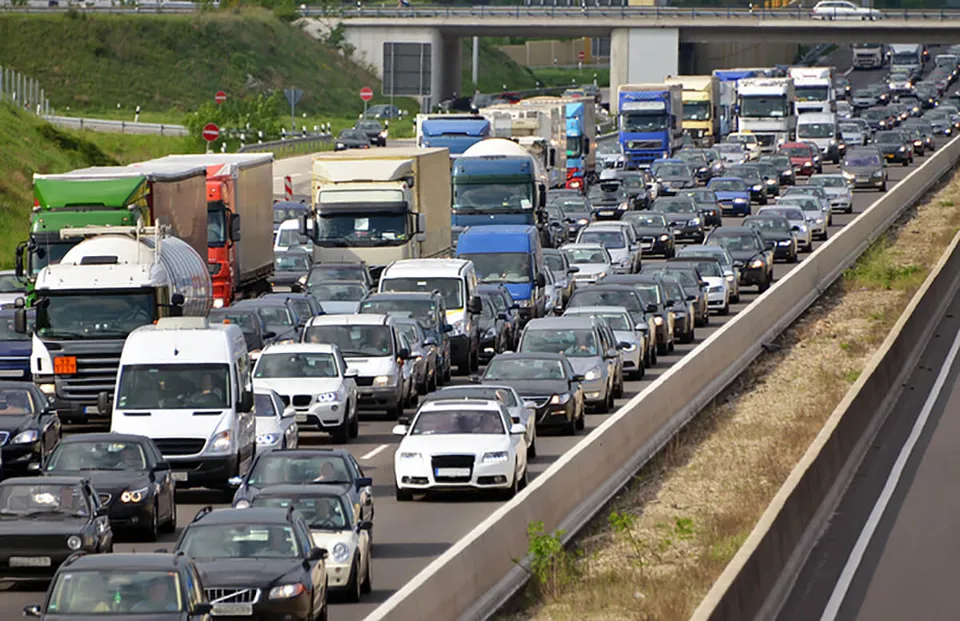The Government is being warned that a new CO2-based road tax regime for vans will fail to deliver greener vehicle choices and could actually encourage the wrong buying behaviour.
A consultation has been launched by the Treasury on replacing vehicle excise duty (VED) for vans with a new system based on CO2 emissions similar to cars.
Around 75% of vans purchased in 2016-2017 emitted more than 150g/km of CO2, while less than one in every 200 vans bought that same year were ultra-low emission vehicles.
The Government wants to change this by introducing a new graduated tax regime based on CO2, which environment secretary Michael Gove says will increase the adoption rates of low emission vans by making them more affordable.
However, the proposals overlook the fact that the biggest obstacles to uptake of electric vans are lack of models (3.5-tonne vans are only just coming to market) and charging restrictions at a local depot level, not the upfront cost.
Gerry Keaney, chief executive of the British Vehicle Rental and Leasing Association (BVRLA), said: “This approach is not ideal because it penalises van drivers or their employers for using what is an essential business tool.
“Some jobs require larger vans with larger engines and larger CO2 emissions. We do not want a VED regime that encourages people to use vans with a smaller engine and load capacity, which they then either overload or make extra journeys with.
“We recommend the Government uses the tax regime to incentivise people based on air quality performance, so people are rewarded for operating a Euro 6 van and penalised for driving an older, pre-Euro 5 one.”
NOT JUST CO2
The Government favours a CO2-based scheme because the emissions can be banded more easily, as shown with VED for cars, but the consultation does ask whether it would be appropriate to include a NOx element in a new road tax regime for vans.
Martin Flach, Iveco alternative fuels director, told Commercial Fleet the Government needs to put a load factor into the VED rates rather than simply basing it on CO2 emissions.
“If it’s just based on g/km, then I could go and buy a little van with half a tonne payload and 2cu m space at 100g/km or a 3.5-tonne van with 1.5 tonnes and 20cu m at 200g/km. It will have the wrong effect because it encourages downsizing and then you are making two trips instead of one. Van operators buy 3.5-tonne vans because they have to; it’s not like cars where it’s personal choice to have a big or small vehicle.”
Flach added that the proposals would also do little to incentivise the uptake of electric vans.
“In the overall cost of ownership, the VED is a small amount, so it’s not going to have a big effect on driving people into electric or hybrid,” he said.
Nick Hardy, sales and marketing director at van and car leasing company Ogilvie Fleet, also questioned whether the measures would impact van choice.
“Important elements for operators of vans tend to be them being fit for purpose, reliable and economical mixed with low rental costs,” he said.
“Regardless of the tax position, most operators will look at the total operating costs and choose on that basis.”
VED BANDS
The consultation suggests that VED for vans could either be based on the 13 bands currently used for cars, which range from 0g/km to more than 255g/km, or the company car tax regime, where there are 23 bands, which broadly rise at 5g/km intervals above 90g/km of CO2.
Using the car VED system, the Government has proposed a zero first-year rate for pure electric vans, with nothing to pay in subsequent years.
Vans emitting 1-50g/km would pay £10 in year one and £125 thereafter, while those emitting 51-75g/km would pay a £25 first-year rate and a standard annual flat rate of £255.
Almost 75% of new vans sold in 2016/17 emitted more than 150g/km; one in four (24.7%) had emissions of 151-170g/km and almost a third (30.5%) emitted 191-225g/km.
That would see the vast majority of new vans (94.6%) paying a first year rate of up to £250, with one in 20 vans, based on 2016/17 registrations, paying £400-500.
Using the 23 company car tax bands as the basis for van VED, 91.8% of vans (2016/17 registrations) had emissions of 220g/km or less and would pay a first-year rate of up to £240. One in 12 (8.2%) would pay £300-500. Subsequent yearly rates would mirror those in the car VED example.
Van VED currently costs £250 per year. Therefore, under both schemes, there would be little change for the majority of vans. A new van emitting 151-170g/km bought this tax year (2018/19) would currently pay £1,500 over six years; under a new 13-band regime it would pay £1,475 and under a 23-band system, £1,485-£1,490.
Paul Tate, commodity manager at Siemens, with 1,200 commercial vehicles on his fleet, gave a cautious welcome to the proposals: “Why should one size fit all from the cleanest commercial to a vehicle 10 years old or more?” he asked. However, Tate added: “I just hope this is thought through thoroughly and is not just an income generation scheme, attacking an audience which is already working to tight margins.”
The Government insists any changes will be introduced in “a manner which is broadly fiscally-neutral”.
NO IMPACT ON EXISTING VANS
In terms of how and when the new VED scheme could be introduced, the consultation closes on July 20, with an announcement expected in the autumn Budget.
The Government stresses that no changes to the structure of van VED will affect existing vans, or any vans which are first registered before any changes come into effect. They will also continue to pay a flat rate, under the current van VED system, as they do now.
Furthermore, the small numbers of existing vans which still benefit from reduced rates since they were early adopters of Euro 4 and Euro 5 standards will be unaffected by this change.
The Government says it is also conscious of the need to maintain a “coherent tax system” as laboratory tests that measure vehicle CO2 are overhauled.
The New European Drive Cycle (NEDC) is being replaced by a new laboratory test, the Worldwide harmonised Light vehicles Test Procedure (WLTP), which is designed to be more representative of normal driving behaviour.
Alongside WLTP, Real Driving Emissions (RDE) tests are also being introduced, which involve the vehicle being driven on ordinary roads with a portable emissions measurement system. WLTP and RDE testing has already become mandatory for new car type approvals, and will become mandatory for new van type approvals from September 2018.
By September 2019, all new registrations of light commercial vehicles will be subject to WLTP and these will be subject to RDE testing from September 2020.
Early indications suggest that reported vehicle CO2 emissions could increase by up to 30% when compared to the old NEDC test values.
The Government announced in last year’s Budget it intends to use WLTP values for CO2-based vehicle taxes from April 2020. However, recognising this predicted rise in values, it is speaking to industry about whether the thresholds of the current VED and company car tax bands are appropriate once WLTP values of CO2 begin to be used.
OTHER TAXES COULD CHANGE
The consultation says some other flat rate van taxes could also be changed to drive down van emissions.
Van benefit charge is payable where an employee is provided with a company van by his employer which can be used privately (not including home-to-work commuting). The Government provides a standard taxable value (£3,350 in 2018-19) for all vans.
The fuel benefit charge – a tax on free fuel – also has a flat rate for vans (£633 in 2018/19).
However, with similar charges for cars being CO2-based, the Government says if there is an “appetite for reform”, it will publish a separate consultation.























Nigel Boyle - 07/06/2018 14:40
A solution that has not been thought through. Less tax carrying a tonne of coal than a tonne of feathers!